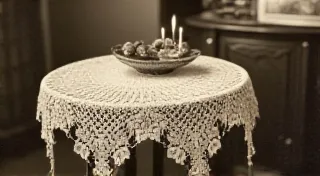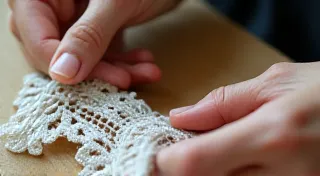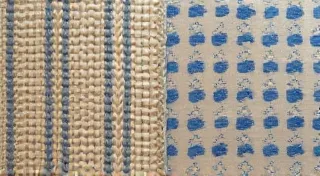Distinguishing Bobbin Lace from Needle Lace
The world of antique lace is vast and beautiful, but also a little confusing. Identifying the type of lace can be tricky, even for seasoned collectors. Two of the most common types, bobbin lace and needle lace, are often mistaken for one another. Understanding the key differences in their construction and appearance is essential for proper identification and appreciation. This article will explore those differences, providing you with the knowledge to better identify antique bobbin lace and differentiate it from its needle-made counterpart.
Understanding the Processes
The fundamental difference lies in how each type of lace is made. Bobbin lace is created by intertwining numerous threads wound on bobbins. The lacemaker manipulates these bobbins to create a series of loops and knots, forming the intricate design. This process requires careful planning and a layout, often pinned to a board as a guide. The finished bobbin lace tends to have a more three-dimensional look, due to the overlapping and twisting of the threads.
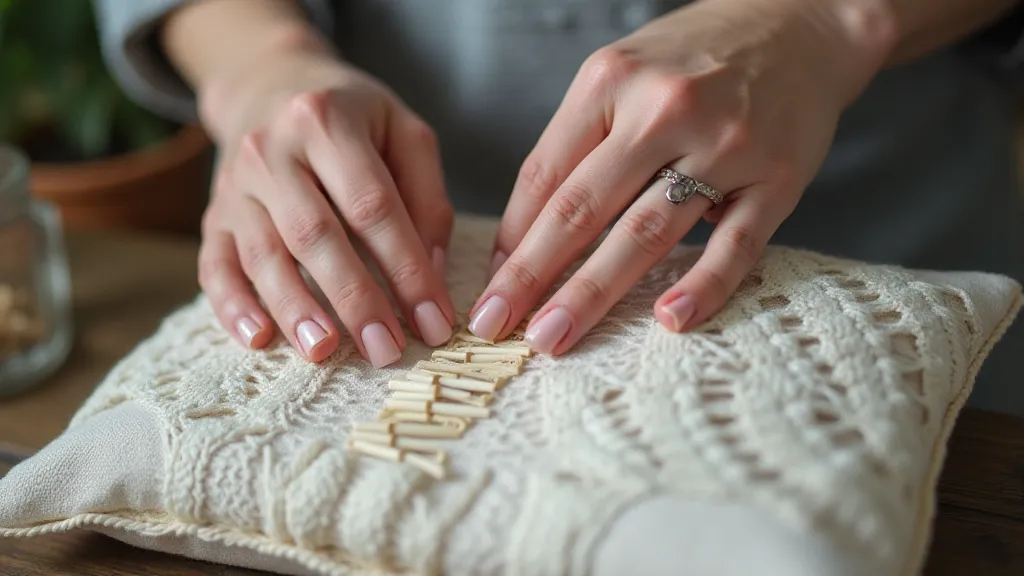
Needle lace, on the other hand, is entirely created by hand using a single needle and thread. The lacemaker creates tiny buttonholes and loops directly with the needle, building up the design stitch by stitch. This is a far more time-consuming and individual process, often requiring immense skill and patience. Needle lace is generally flatter and more delicate than bobbin lace.
Key Differences in Appearance
Beyond the construction methods, several visual cues can help you distinguish between the two types:
- Thickness and Texture: Bobbin lace often appears thicker than needle lace. The intertwining of multiple threads creates a more substantial feel. Needle lace tends to be very fine and delicate.
- Design Characteristics: Bobbin lace designs often feature bolder, more geometric patterns. While intricate designs are possible in both types, bobbin lace lends itself particularly well to symmetrical and repetitive motifs. Needle lace often showcases more free-flowing, organic designs and a greater emphasis on individual artistic expression. The evolution of bobbin lace patterns, and the historical context within which they arose, is fascinating; many designs reflect the ephemeral threads of empires and their decline, showcasing how these delicate creations served as both functional and symbolic representations of cultural and economic power. The underlying structure often echoes the precision and thought of the cartographer's knot, revealing the hidden geometry within seemingly random patterns.
- Thread Appearance: Examine the threads closely. Bobbin lace threads may show slight variations in tension, indicating their winding and manipulation on the bobbins. Needle lace threads tend to be uniformly consistent in tension, showing the direct handwork of the lacemaker.
- 'Knotting' vs. 'Stitching': Bobbin lace has what appears as knots due to the crossing of the bobbins. Needle lace shows individual stitches, consistently spaced.
Let's break down some more specific observations:
- Ground Texture: Bobbin lace often exhibits a slightly "fuzzy" or textured ground due to the multiple threads. Needle lace generally has a smoother surface.
- Edge Detail: Bobbin lace edges can be quite substantial, often with raised or folded edges created by the bobbins. Needle lace edges are usually more delicate and refined.
- Damage & Repair: Due to the construction, damage to bobbin lace can appear quite distinct—you might see broken or fragmented sections where the threads have come undone. Repairs to bobbin lace may involve patching or re-winding. Needle lace repairs, due to its single-thread construction, may show evidence of stitching and re-creation of tiny loops. The careful observation of these repair techniques can, in some instances, offer clues as to the age and origin of the lace. Understanding the nuances of lace repair is essential for any serious collector, and further study into the subtleties of antique textile preservation can be a rewarding endeavor.
Delving Deeper: The Geometry and History of Lace
The patterns within bobbin lace aren’t simply decorative; they often represent sophisticated geometric principles. Collectors often find themselves captivated by the unexpected symmetry and the underlying structure that defines these exquisite pieces. For those intrigued by this aspect, exploring the principles behind fractured symmetry in bobbin lace collecting provides a richer understanding of the craft and its historical context. The study of these patterns reveals a fascinating intersection of mathematics and artistry, demonstrating how lacemakers translated complex ideas into tangible forms. The history of lace extends far beyond mere aesthetics; it provides a window into the cultural, economic, and technological advancements of different eras.
Regional Variations and Influences
While the fundamental techniques remain consistent, the visual appearance of bobbin lace varies significantly across different regions. These variations are influenced by factors such as available materials, local traditions, and the individual styles of lacemakers. Identifying these regional nuances requires a keen eye and a deep understanding of lace history. Examining these differences isn’t just a matter of aesthetics, but rather, an investigation into the cultural threads woven into each piece. For those eager to pinpoint the origin of a piece, a detailed examination of regional variations in bobbin lace is an essential step. Understanding the unique characteristics of regional styles can transform your appreciation of these textile treasures.
The Lacemaker’s Perspective: A Matter of Skill and Patience
The creation of bobbin lace, while seemingly intricate, is governed by relatively simple processes. However, mastering those processes and developing an individual style demands years of dedication and unparalleled patience. Understanding the nuances of the craft requires appreciating the almost meditative focus required to create the intricate designs. The process is akin to a cartographer meticulously mapping out a landscape, translating spatial relationships into a tangible form. The underlying structure often echoes the precision and thought of the cartographer's knot, revealing the hidden geometry within seemingly random patterns. The history of lace mirrors the history of human ingenuity, showcasing how individuals have found beauty and meaning in the intricate details of creation.
Beyond the Basics: Factors to Consider
It's important to remember that there are exceptions to every rule. Some lacemakers deliberately blurred the lines between the two techniques, incorporating elements of both. The age of the lace, the region of origin, and the individual lacemaker’s style can all influence its appearance. Careful observation and experience are crucial for accurate identification. The discerning collector approaches each piece with an open mind, recognizing that the story behind a textile is often as captivating as its beauty.
Resources for Further Study
This article provides a basic introduction to distinguishing bobbin lace and needle lace. For a deeper understanding, explore antique lace books, museum collections, and online resources dedicated to the study of antique textiles.
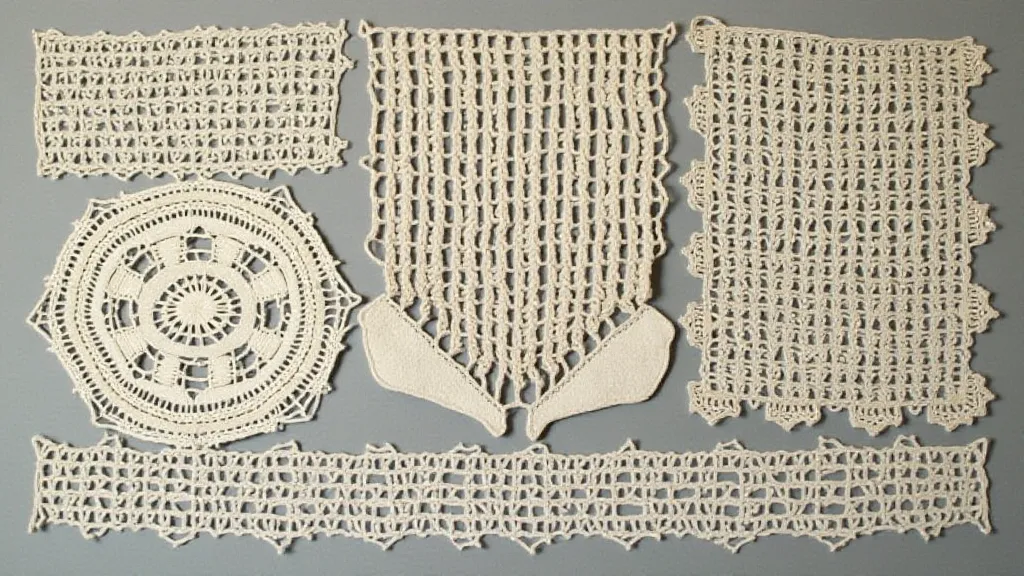
By understanding the fundamental differences in construction and appearance, you can enhance your appreciation for these beautiful and enduring works of textile art.



